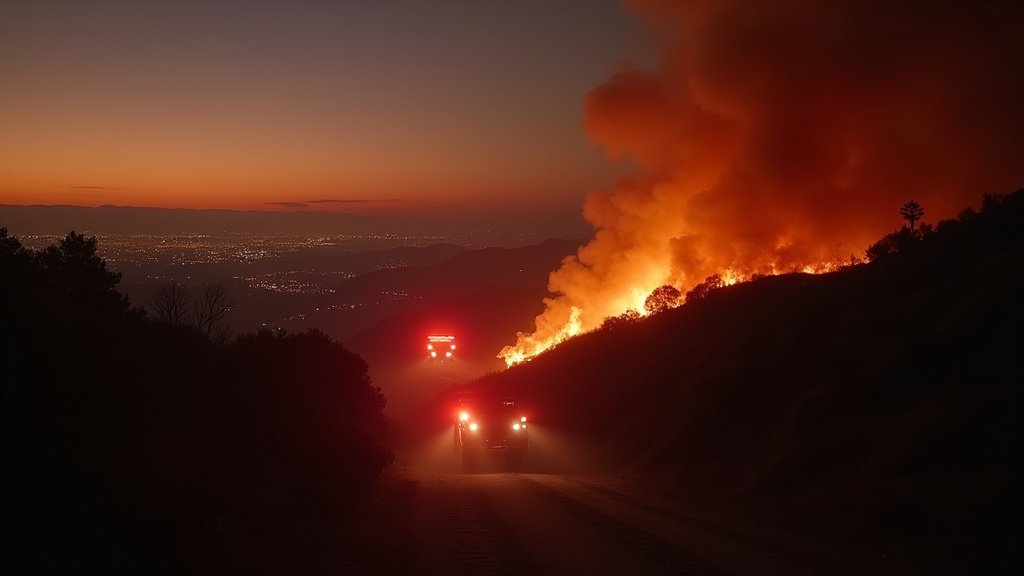The Los Angeles Flood Threat is escalating as a powerful atmospheric river storm approaches, bringing with it a substantial risk of flash floods and debris flows. Peak impacts are anticipated on November 13–14, 2025, prompting widespread evacuation alerts LA in areas particularly vulnerable due to recent wildfire activity. Understanding the Los Angeles Flood Threat is crucial for residents.
Atmospheric River Storm and Imminent Dangers for Los Angeles Flood Threat
Atmospheric rivers, described as “rivers in the sky,” are carrying vast amounts of moisture from the tropics towards the poles, and this particular system is poised to deliver heavy rainfall across the region. Forecasters predict that downtown Los Angeles could experience its wettest November since 1985 if current projections hold true. The most likely scenario suggests approximately 2.62 inches of rain for downtown LA from late Thursday through Sunday, a figure that could push this November into record books. However, there is a considerable chance of higher rainfall, with some forecasts indicating up to 4.81 inches for downtown and localized totals potentially reaching 4 to 10 inches in coastal and valley areas, and as much as 8 inches on coastal slopes. Rainfall rates could surge to three-quarters of an inch to 1 inch per hour at times, a pace heavy enough to trigger urban flooding and dangerous debris flows, a significant aspect of the Los Angeles Flood Threat.
Burn Scar Zones Under Evacuation Warnings and Los Angeles Flood Threat
Areas that have recently experienced wildfires are at elevated risk due to destabilized soils on steep slopes. Consequently, Los Angeles County officials have issued evacuation warnings for residents living near numerous burn scar zones, amplifying the Los Angeles Flood Threat. These include areas impacted by fires such as Canyon, Bethany, Eaton, Palisades, Hurst, Kenneth, Sunset, Lidia, Franklin, and Bridge. These warnings are in effect through Sunday, November 16, urging residents in these zones to be prepared to leave at a moment’s notice. The Los Angeles County Fire Department has advised residents in burn and flood-prone areas to stay away from flood channels, catch basins, canyons, and waterways, which are susceptible to rapid flooding and contribute to the Los Angeles Flood Threat.
Official Preparations and Public Safety Directives for Los Angeles Flood Threat
Authorities are taking extensive measures to mitigate the potential impacts of the storm, particularly concerning the Los Angeles Flood Threat. California Governor Gavin Newsom has announced the pre-deployment of emergency resources to protect communities in Los Angeles, Orange, and Ventura counties from mudslides and debris flow. The National Weather Service (NWS) has issued flood watches and excessive-rainfall outlooks for various parts of Southern California, highlighting the increased potential for flash floods, particularly where soils are saturated or where burn-scar hydrology accelerates runoff. The Los Angeles Police Department will be conducting door-to-door visits to high-risk homes to provide additional information about the Los Angeles Flood Threat. Residents are urged to monitor emergency alerts and have an emergency kit prepared.
Broader Impacts and Historical Context of California Weather
Beyond the immediate flood and debris flow threats, the storm’s heavy rainfall is expected to significantly curtail the region’s wildfire season. The potential for significant rainfall also brings concerns about infrastructure damage, including roadway closures. Caltrans has announced plans to close Topanga Canyon Boulevard in the Palisades Fire Zone as a precautionary measure. While atmospheric rivers are typical during California weather patterns in the winter months, a storm of this magnitude impacting Southern California in November is considered somewhat early and significant, underscoring the severity of the Los Angeles Flood Threat.
As the storm continues its progression, officials emphasize the critical need for residents to stay informed, heed all evacuation warnings, and prioritize safety. News from Los Angeles indicates a heightened state of readiness across the county as this powerful weather system approaches, bringing with it a significant Los Angeles Flood Threat.





